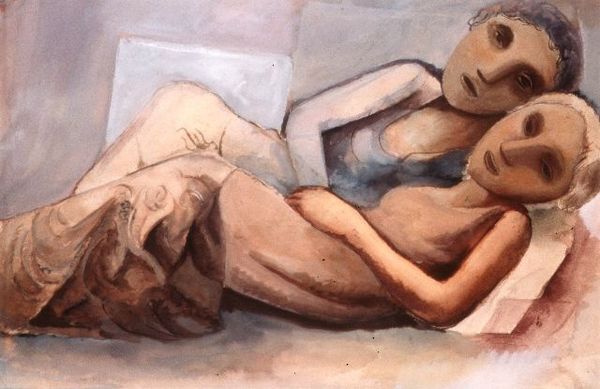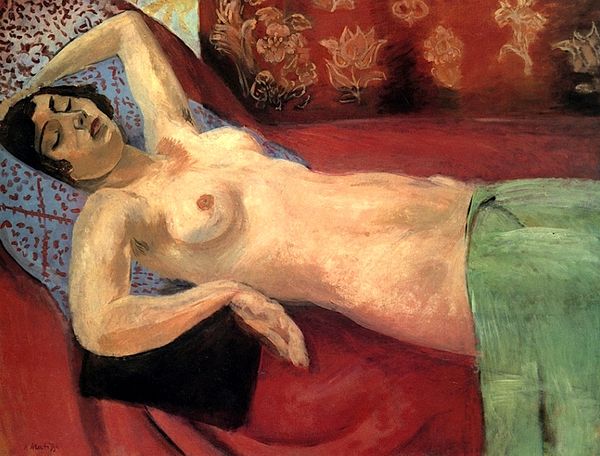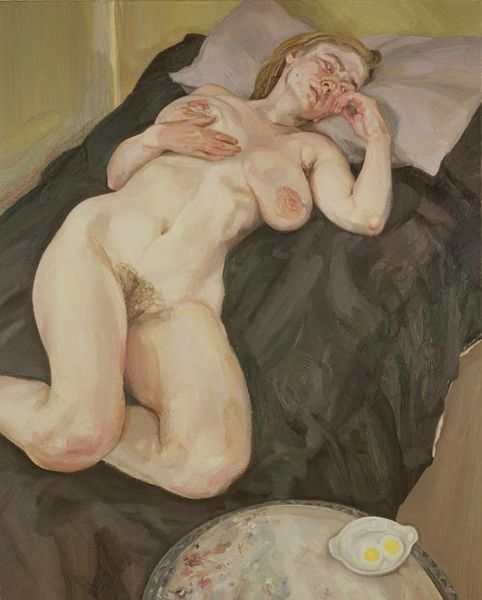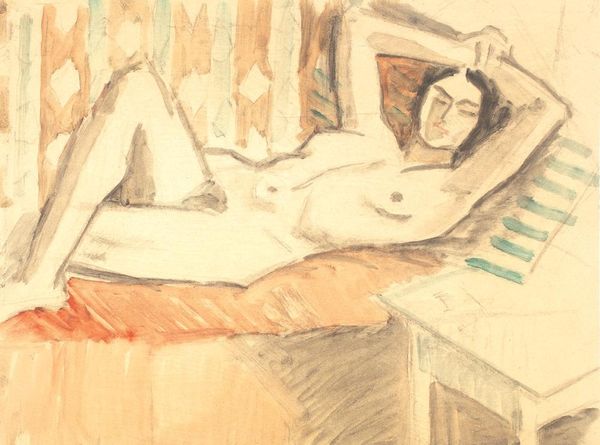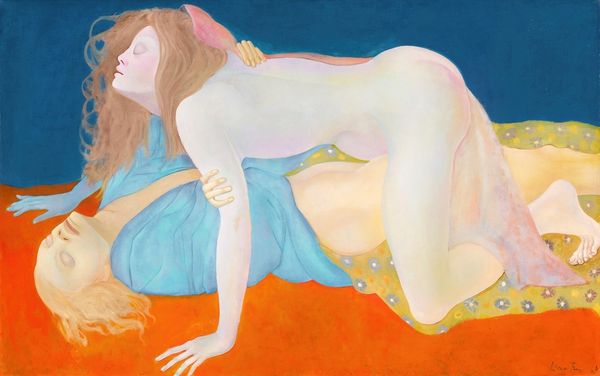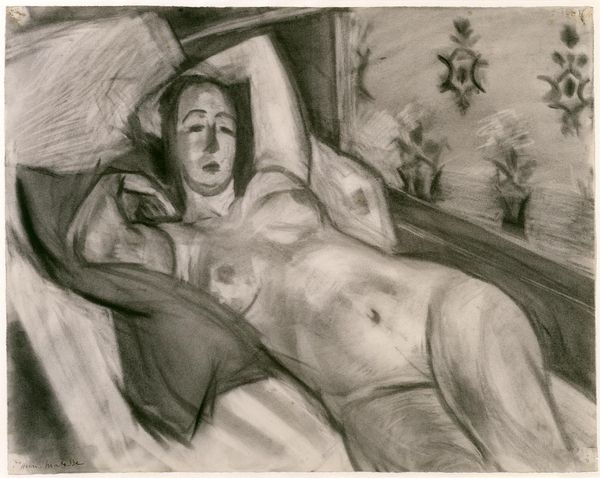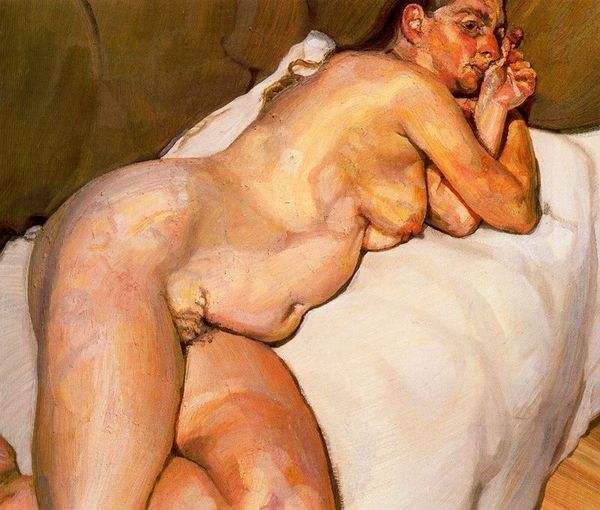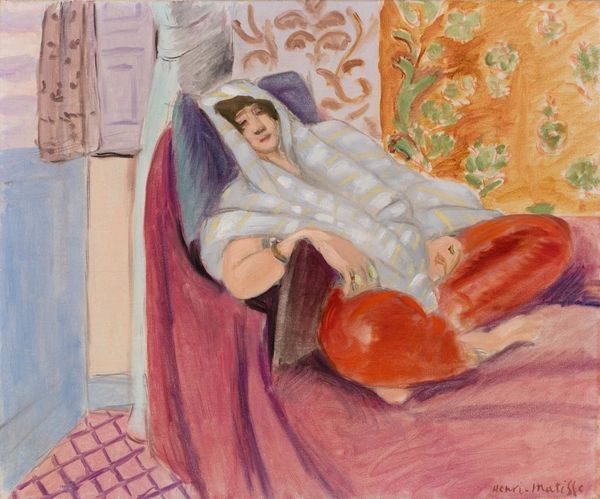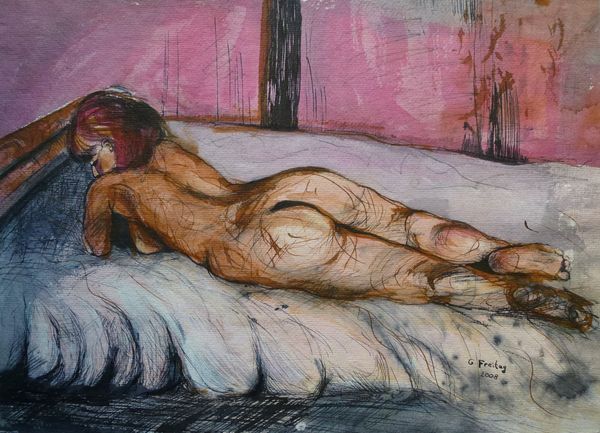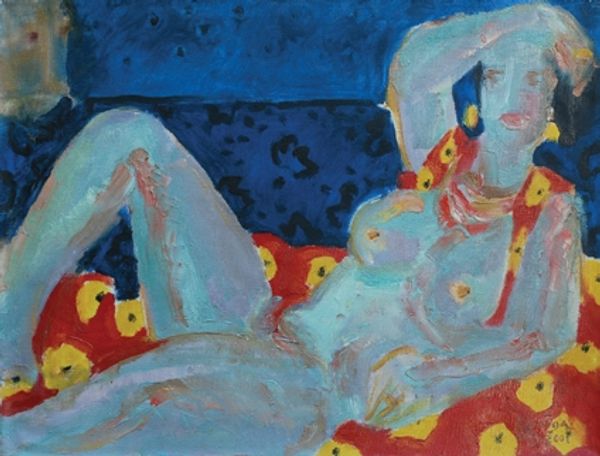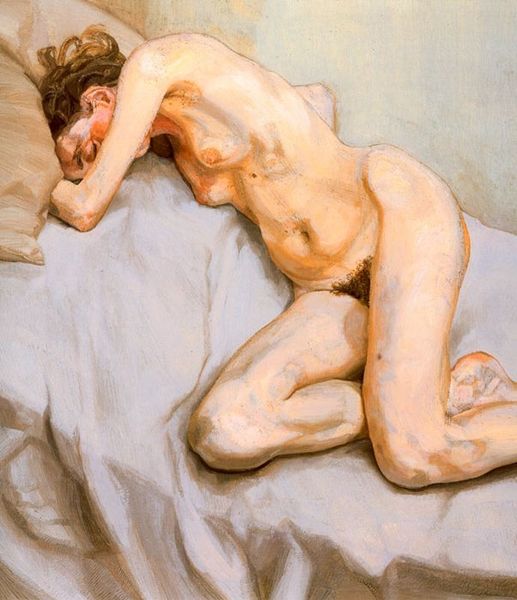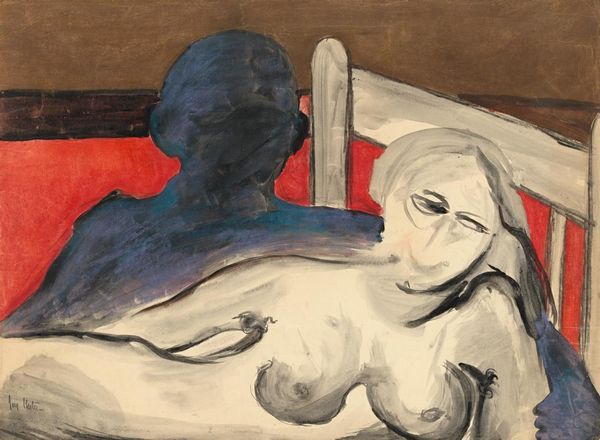
Copyright: Modern Artists: Artvee
Curator: Welcome. Today we're considering Henri Matisse's "Reclining Nude," dating from 1923-1924. Editor: It’s remarkably domestic for a nude. I'm immediately struck by how the floral wallpaper interacts with the figure's form. It nearly flattens her, as if she were just another patterned object in the room. Curator: Precisely. The wallpaper, combined with the slightly awkward pose, removes some of the classical idealization we might expect. It emphasizes the domestic setting and perhaps suggests a bourgeoise audience that Matisse was courting at that time. Editor: I notice the layered oil paint, thick in some areas, thinner in others, almost raw. It highlights the process, the actual labor that went into its creation. There’s a real sense of physicality, of making. Curator: And what of the historical construction around this…making? In the early 20th century, displaying nudes served specific cultural functions related to ideals of beauty, sexuality, and national identity. Consider where and how Matisse exhibited it… Editor: Yes, but look at the brushwork around her shoulder! He almost sculpts with the paint. It begs the question: how complicit was he with representing bourgeois sexuality if the technique fights against conventional notions of finish? The tension is very modern. Curator: Good point, though Matisse's engagement with the marketplace can’t be overlooked. How did these intimate domestic scenes reinforce or challenge established norms, who were his patrons, and where would a painting like this likely hang? Editor: Fair. It's easy to get lost in the process. Still, I love the rawness; you can almost smell the linseed oil. Considering the materiality makes me question easy narratives. Curator: Ultimately, exploring this piece encourages us to think about how the depiction of women shifted during this period and what cultural messages these images were communicating, consciously or not. Editor: Absolutely, it's a potent reminder that artistic creation, no matter how intimate it appears, remains tethered to the messy realities of labor, markets, and social values.
Comments
No comments
Be the first to comment and join the conversation on the ultimate creative platform.
